Rufus is a free, open-source free software released under the GNU GPL 3+ License that helps users to format and create a bootable USB flash drive. A lot of Windows users opt to use Rufus; however, people using macOS are out of luck.
You cannot use Rufus for Mac unless you install Windows on your computer and install the software afterward. This is because the tool is designed solely for Windows XP/7/8/10 with a 32-bit or 64-bit operating system. While Rufus is not available for macOS and you might not be interested in going through the hassle of installing a secondary Windows system on your Mac computer, some great alternatives offer similar functionality.
In this article, we'll explore five of Rufus Mac’s alternatives. Furthermore, we'll provide a brief overview of each program so that you can select the one that suits your needs according to your system specifications.
Part 1. 8 Best Alternatives of Rufus to Create Bootable USB on Mac
Rufus is a perfect tool for creating bootable USB drives for Windows. However, as Rufus for macOS is not supported, you might be looking for an alternative to use on your Mac system.
Here are some of Rufus Mac’s alternatives we have chosen for you:
Tool |
Price |
Compatibility |
Success Rate |
Trust Pilot & G2 Ratings |
| Etcher | All features available for Free | Windows, macOS, Linux | 85% | Trust Pilot: NA G2 Rating: 4.4 out of 5 |
| DiskMaker X | All features available for Free | macOS Catalina | 95% | Trust Pilot: NA G2 Rating: NA |
| UNetbootin | All features available for Free | Windows, macOS, Linux | 90% | Trust Pilot: NA G2 Rating: NA |
| UUBytes ISO Editor | Comes with a free trial. Cost $29.95 | Windows 10, macOS Big Sur | 80% | Trust Pilot: 4.2 out of 5 G2 Rating: 4.0 out of 5 |
| Install Disk Creator | All features available for Free | macOS | 80% | Trust Pilot: NA G2 Rating: NA |
| Ventoy | All features available for Free | Windows, macOS, Linux | 80% | Trust Pilot: NA G2 Rating: NA |
| Boot Camp Assistant | All features available for Free | macOS | 90% | Trust Pilot: NA G2 Rating: NA |
| TransMac | Free trial for 15 days. Full version priced at $59 | Windows | 85% | Trust Pilot: NA, G2 Rating: 4.0 out of 5 |
Etcher
Etcher is a free and open-source tool that makes it easy for you to create bootable USB drives from ISO files and is supported by Windows, Mac, and Linux operating systems.
Note: ISO files are a type of disk image that can be used to create a bootable USB drive.
Creating a bootable USB drive with Etcher is simple. First, you need to download the Etcher tool and install it on your computer. Once Etcher is installed, open it and select the ISO file you want to use to create the bootable USB drive. Select the USB drive and click the "Flash!" button. Etcher will then start creating the bootable USB drive.
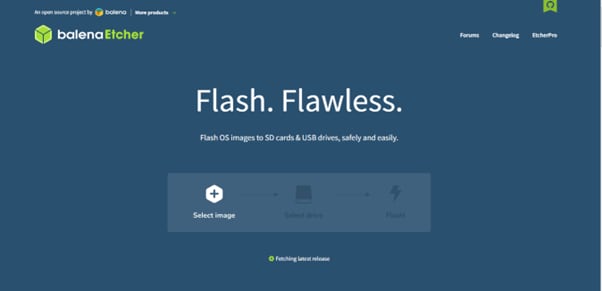
Etcher works with USB as well as SD cards and comes with an image validation feature, which means it won't write the image on a corrupted SD card/USB. Also, this tool works on the latest versions of BigSur and macOS Monetary.
Pros:
- User-friendly interface
- Supports a wide range of OS images
- Fast and reliable
- Open-source and actively maintained
Cons:
- Unable to choose between MBR and GBR partition styles
- Primarily designed for Linux distributions and not specifically for macOS
DiskMaker X
DiskMaker X is a popular tool built with AppleScript and can be used for creating bootable USB drives for Mac computers. The program is simple and quick to use and can be installed in various versions of OS X/Mac OS.
Once installed, DiskMaker X will automatically detect the OS X installation file as well as the USB attached to your Mac computer or laptop. From there, it will automatically flash the system image.
DiskMaker X is a great Rufus alternative for Mac and can transform any USB drive, SD card, Thunderbolt drive, or external Firewall into a bootable drive. Whether you're installing macOS for the first time or need to troubleshoot a problem, DiskMaker X can help but it is not compatible with the latest macOS such as Big Sur and Monterey.
If you want to know more about DiskMaker X, you can read the article A Detailed Guide on Using DiskMaker to Create Bootable macOS USB. We have provided the specific introduction for DisMaker X and more details there.
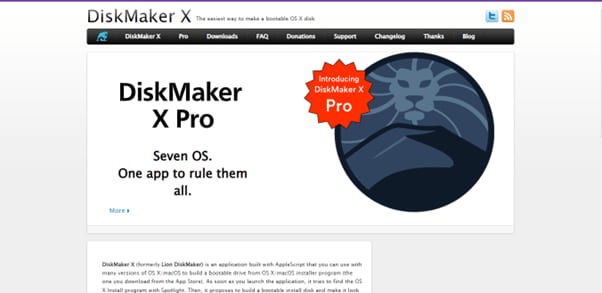
Pros:
- Specifically designed for macOS
- Supports multiple macOS versions
- Easy-to-use interface
Cons:
- Limited to macOS installations
- Not updated as frequently as other tools
UNetbootin
Initially designed for Linux-based boot drives, UNetbootin or Universal Netboot Installer is an excellent Rufus for Mac alternative with a cross-platform utility that you can use for other operating systems, such as creating Windows and Mac bootable USB drives.
To use UNetbootin, simply download the program and run it. Select the ISO file you wish to use and the target drive you want to use. Click "OK," and UNetbootin will create your Mac bootable USB drive.
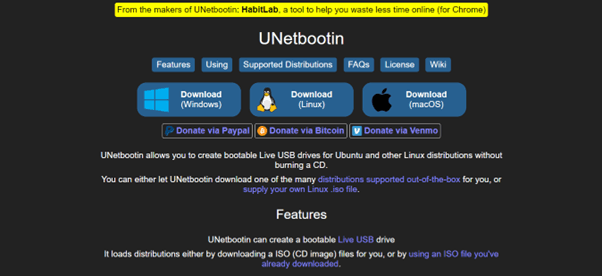
UNetbootin supports various distributions, including Fedora, PCLinuxOS, Linux Mint, Debian, Parted Magic, Frugalware, openSUSE, FreeBSD, ArchLinux, NetBSD, Ubuntu, and CentOS. However, this tool has no SD card or UEFI support along with the inability to use multiple booting images on a single hard drive.
If you hope to use UNetbootin to create a bootable Mac USB successfully, please go to the article on the guide to use UNetbootin on Mac.
Pros:
- Wide range of supported Linux distributions
- Cross-platform compatibility
- Simple and easy to use
Cons:
- Not specifically designed for macOS
- Limited customization options
UUByte ISO Editor
UUByte ISO Editor is another great Rufus alternative for mac tool for creating bootable ISO images from your Mac OSX installation disk or any other disk image file. You can also create an ISO archive from external files or folders.
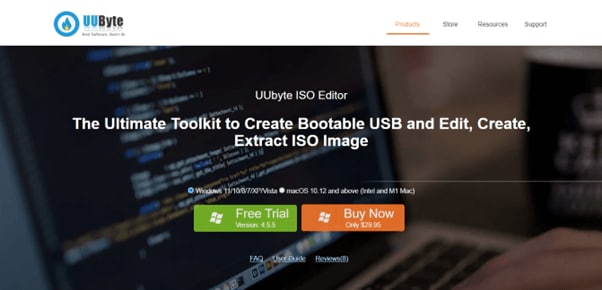
This software is user-friendly and comes with value-added features that support all popular Mac ISO formats to create images from scratch. You can also add or extract files from an ISO image.
Pros:
- Supports Windows and Linux installations
- User-friendly interface
- Additional features like ISO extraction, editing, and burning
Cons:
- Not a free tool
- Need to manually download the ISO files on your Mac for image creation
Install Disk Creator
Install Disk Creator is a free and lightweight disk image creation tool for the macOS platform that enables you to transform other media into a macOS bootable installer or create a bootable USB. The tool is especially useful for users who want to quickly perform a clean install or reinstall on multiple Mac computers.
To use the Install Disk Creator, download and install the program on your Mac system. Ensure you are connected to a stable internet connection. Insert a USB flash drive with a minimum of 8GB of storage and launch the application.
Select the current OS on your Mac, click "Return," and type in the administrator user password. The Install Disk Creator tool will begin creating a Mac bootable USB.
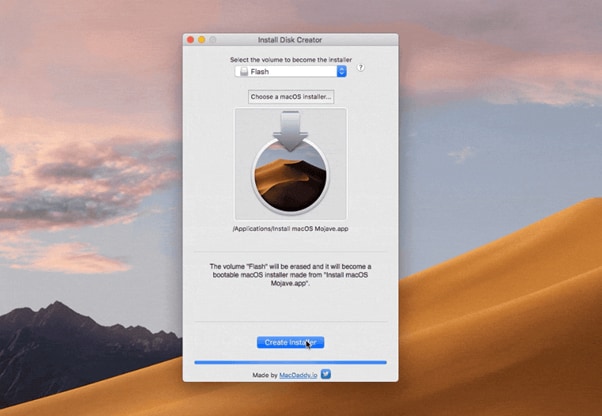
However, the Install Disk Creator tool does not include an indicator to show the time left or the percentage of the completion process while creating a bootable USB.
If you are interested in this tool and hope to get more information, you can go to our article about it: How to Use Install Disk Creator to Create a Bootable USB on macOS.
You also can watch this video to get more information about the best Rufus for macOS alternatives to Rufus.
Pros:
- Easy to use with a straightforward interface
- Supports multiple macOS versions
- Lightweight and fast
Cons:
- Limited to macOS installations
- Lacks advanced customization options
Ventoy
Ventoy is an open-source tool that allows you to create bootable USB drives for multiple operating systems, including Windows, macOS, and Linux. It is a flexible alternative to Rufus for Mac users.

Ventoy formats the USB drive and creates a partition for storing ISO files. You can then simply copy the desired ISO files to the USB drive, and Ventoy will automatically create a boot menu for selecting the operating system during boot.
Pros:
- Open-source and free to use
- Supports multiple operating systems, including Windows, macOS, and Linux
- Allows storing multiple ISO files on a single USB drive
Cons:
- May not be as user-friendly for beginners
- Some users may experience compatibility issues with certain hardware configurations
Boot Camp Assistant
Boot Camp Assistant is a native macOS utility that comes pre-installed on all Mac computers. It is designed to help users create a bootable USB drive for installing Windows on a Mac computer, making it an ideal Rufus alternative for mac users.

This software will guide you through the process of partitioning your hard drive and creating a bootable USB drive. You need to provide a Windows ISO file, and the tool will automatically format the USB drive and copy the necessary files.
Pros:
- Pre-installed on macOS, no need for additional downloads
- Easy to use with a guided process for creating bootable USB drives
- Reliable and specifically designed for creating Windows bootable USB drives on Mac
Cons:
- Limited to creating bootable USB drives for Windows installations only
- Does not support other operating systems like Linux
TransMac
TransMac TransMac is a Windows-based software that allows you to create bootable USB drives for macOS. While it's not a native macOS application, it's a useful option if you have access to a Windows machine and need to create a macOS bootable USB drive.

Firstly, you need to provide a macOS DMG file and a USB drive. TransMac will then format the USB drive and copy the necessary files to create a bootable macOS USB drive.
Pros:
- Reliable tool for creating macOS bootable USB drives on Windows computers
- Supports a wide range of macOS versions
Cons:
- Paid software with a 15-day free trial
- Limited to creating bootable USB drives for macOS installations only
- Compatibility: Windows only (for creating macOS bootable USB drives)
Part 2. Another option to recover data from unbootable Mac: Recoverit
Above are the five good utility tools we have specially chosen for you. We hope you can find a satisfying solution to help you out. However, if the above-mentioned Rufus Mac alternative tools cannot rescue your unbootable data, please don’t worry. There is a powerful tool to recover your data from the crashed computer – Recoverit.
Recoverit is a professional data recovery tool that can run smoothly on your Mac and recover your data lost under different situations, including an unbootable Mac.
To use Recoverit, please do the following steps in sequence:
Requirements of Using Recoverit:
- A formatted or blank USB drive with at least 16 – 32 GB of storage space.
- Recoverit Software.
- A working Windows PC or Mac computer.
The Step-by-step Guidance:
Follow the instructions below step-by-step to retrieve your data from your unbootable or crashed Mac using the Recoverit software.
Step 1: On your other Windows 10, 11 PC, or Mac computer, download and install the Recoverit software. Afterward, launch the app and plug in the USB flash drive.
For Windows Vista/7/8/10/11
For macOS X 10.10 or later
From the left-hand side menu of the software dashboard, head to "System Crashed Computer" and click "Start" to begin the recovery process. Choose the USB drive name and click the "Start" option to initiate the USB formatting process.
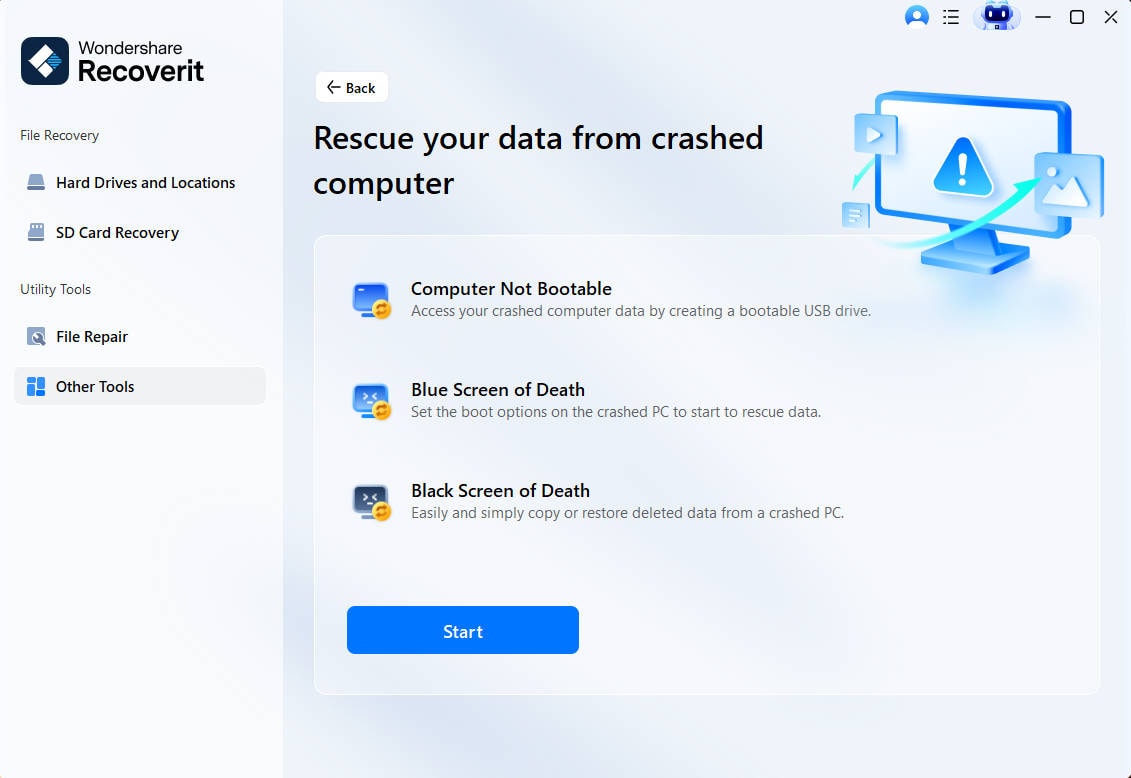
A warning message will appear for formatting the USB drive. Click the "Format" option to let Recoverit create a bootable USB.

Step 2: Plugin the bootable USB drive into the affected Mac’s USB port. Press the Power button and Option key simultaneously and select the Wondershare Recoverit Bootable Media Drive when appears on the screen.
Step 3: Take an external hard drive and connect it to your unbootable Mac system. Afterward, select a copy of your data files in the Wondershare Recoverit Bootable Drive Window and choose the external hard drive as the destination. Click the "Start Copy" button to begin copying your data from Mac to the drive.
Wait until the data copying process is finished and you will successfully get your data back.
Conclusion
In this article, we've discussed why Rufus for Mac bootable USB is not an option for macOS users. We’ve also discussed five of Rufus’s Mac alternatives to create a bootable USB quickly. We've elucidated the pros and cons of each tool to help you decide which program best meets your needs.
Hopefully, you find this guide helpful, and you can now decide which tool you are going to use to create a bootable USB drive for your Mac system.

 ChatGPT
ChatGPT
 Perplexity
Perplexity
 Google AI Mode
Google AI Mode
 Grok
Grok























